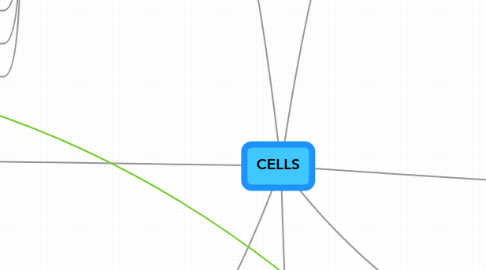
1. Organelles
1.1. Nucleus
1.1.1. envelope
1.1.2. chromatin
1.1.3. chromosomes
1.1.4. nucleosomes
1.1.5. nucleoli
1.2. Ribosome
1.2.1. assemble
1.2.1.1. proteins
1.3. Endoplasmic Reticulum
1.3.1. Rough
1.3.1.1. attach
1.3.1.1.1. glyco to protein
1.3.2. Smooth
1.3.2.1. manufacture
1.3.2.1.1. hormones
1.3.2.1.2. lipids
1.4. Golgi apparatus
1.4.1. package
1.4.1.1. proteins
1.4.1.2. lipids
1.5. Lysosomes
1.5.1. vesicles
1.5.2. enzymes
1.5.2.1. digestive
1.5.3. from Golgi
1.6. Peroxisomes
1.6.1. liver
1.6.2. kidney
1.7. Mitochondria
1.7.1. respiration
1.7.1.1. aerobic
1.8. Chloroplasts
1.8.1. photosynthesis
1.9. Cytoskeleton
1.9.1. Microtubles
1.9.2. Microfilaments
1.10. Flagella/Cilia
1.11. Centrioles
1.11.1. MTOC
1.12. Vacuoles
2. Transport
2.1. Modes
2.1.1. Passive
2.1.1.1. down gradient
2.1.1.2. no energy
2.1.1.3. types
2.1.1.3.1. diffusion
2.1.1.3.2. osmosis
2.1.1.3.3. dialysis
2.1.1.3.4. plasmolysis
2.1.1.3.5. facilitated diffusion
2.1.1.3.6. countercurrent exchange
2.1.2. Active
2.1.2.1. up gradient
2.1.2.2. requires energy
2.1.2.3. types
2.1.2.3.1. ion pumps
2.1.2.3.2. coupled
2.1.3. Vesicular
2.1.3.1. exocytosis
2.1.3.2. endocytosis
2.1.3.2.1. phagocytosis
2.1.3.2.2. pinocytosis
2.1.3.2.3. receptor-mediated
2.2. Solute Concentration
2.2.1. hypertonic
2.2.1.1. solute concentration
2.2.1.1.1. higher
2.2.1.2. water potential
2.2.1.2.1. lower
2.2.2. hypotonic
2.2.2.1. solute concentration
2.2.2.1.1. lower
2.2.2.2. water potential
2.2.2.2.1. higher
2.2.3. isotonic
2.2.3.1. solute concentration
2.2.3.1.1. equal
2.2.3.2. water potential
2.2.3.2.1. equal
3. Prokaryotes
3.1. Organisms
3.1.1. bacteria
3.1.2. cyanobacteria
3.1.3. archaebacteria
3.2. Structure
3.2.1. plasma membrane
3.2.2. DNA molecule
3.2.3. ribosomes
3.2.4. cytoplasm
3.2.5. cell wall
3.3. vs Eukaryotes
3.3.1. NO nucleus
3.3.2. "naked" DNA
3.3.3. Smaller ribosomes
3.3.4. Polysaccharide cell walls
3.3.5. non-microtubule flagella
4. Membrane
4.1. Fluid Mosaic Model
4.1.1. Nicholson & Garth (1972)
4.1.2. 2D Liquid
4.1.3. "fluid"
4.1.3.1. Proteins move freely through membrane
4.1.4. "mosaic"
4.1.4.1. integral proteins
4.1.4.2. peripheral proteins
4.1.4.3. phospholipids
4.1.4.4. cholesterol
4.1.4.5. glycoproteins
4.1.4.6. lipoproteins
4.1.4.7. glycolipids
4.1.5. "model"
4.1.5.1. i. bilayer
4.1.5.1.1. phospholipid
4.1.5.2. ii. proteins
4.1.5.2.1. interspersed
4.2. Phospholipid bilayer
4.2.1. "lipid"
4.2.1.1. small molecules
4.2.1.2. hydrophobic/amphiphilic
4.2.2. "phospholipid"
4.2.2.1. i. glycerol molecule
4.2.2.2. ii. two fatty acids
4.2.2.2.1. tails
4.2.2.3. iii. phosphate group
4.2.2.3.1. head
4.2.2.4. iv. R-group
4.2.2.4.1. attached to phosphate
4.2.3. "bilayer"
4.2.3.1. sandwich
4.2.3.1.1. meat
4.2.3.1.2. bread
4.2.4. amphipatic
4.2.4.1. hydrophilic
4.2.4.2. hydrophobic
5. Proteins
5.1. Channel
5.1.1. transport
5.1.1.1. polar molecules
5.2. Ion channels
5.3. Carrier
5.3.1. transport
5.3.1.1. glucose
5.4. Transport
5.4.1. Active
5.4.2. Na+K+ pump
5.5. Recognition
5.5.1. glycoproteins
5.6. Adhesion
5.7. Receptor
5.7.1. hormone binding site
6. Junctions
6.1. Anchoring
6.1.1. animals
6.1.2. desmosome
6.1.2.1. stability
6.2. Tight
6.2.1. animals
6.2.2. seal between cells
6.2.3. digestive tract
6.3. Communicating
6.3.1. Gap
6.3.2. Plasmodesmata
7. Plants vs Animals
7.1. Plants
7.1.1. cell walls
7.1.2. chloroplasts
7.1.3. central vacuoles
7.2. Animals
7.2.1. lysosomes
7.2.2. centrioles
7.2.3. cholesterol
